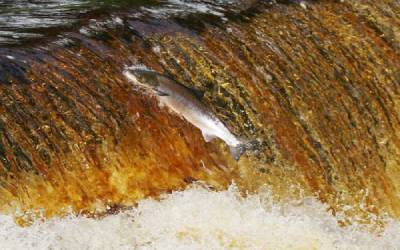Atlantic salmon have returned to a river in Argyll in the highest numbers in a decade after major works restored spawning sites.
The River Goil in Argyll and Bute has suffered from excessive erosion – accelerated by floods, grazing of the banks and increased drainage from the forestry.
Local campaigners say the river had suffered from very fine silt being washed into it, which clogs up the gravel in the water.
The creatures living in the river, which includes Sea Trout and Atlantic Salmon, had suffered from the excess erosion.
Climate change, coupled with increased runoff from the land above, means more water reaches vulnerable areas more quickly.
The Lochgoil Community Trust has been involved in a programme of habitat improvements since 2014, working with Loch Lomond and The Trossachs National Park, the Argyll Fisheries Trust and The River Goil Angling Club.
Campaigners have planted hundreds of native trees along riparian areas of the river, dedicating more than 400 hours to these green revetments.
Roger Brook from Lochgoil Community Trust said: “This led to a lot of very fine silt being washed into the river, which clogs up the gravel of the river and is very poor for the habitat of the creatures living in the river, and particularly very poor for migrating fish, salmon and sea trout trying to spawn in the river.
READ MORE: STV NEWS

